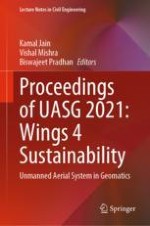2023 | OriginalPaper | Chapter
An Automated Process to Filter UAS-Based Point Clouds
Author : Volkan Yilmaz
Published in: Proceedings of UASG 2021: Wings 4 Sustainability
Publisher: Springer International Publishing
Activate our intelligent search to find suitable subject content or patents.
Select sections of text to find matching patents with Artificial Intelligence. powered by
Select sections of text to find additional relevant content using AI-assisted search. powered by
